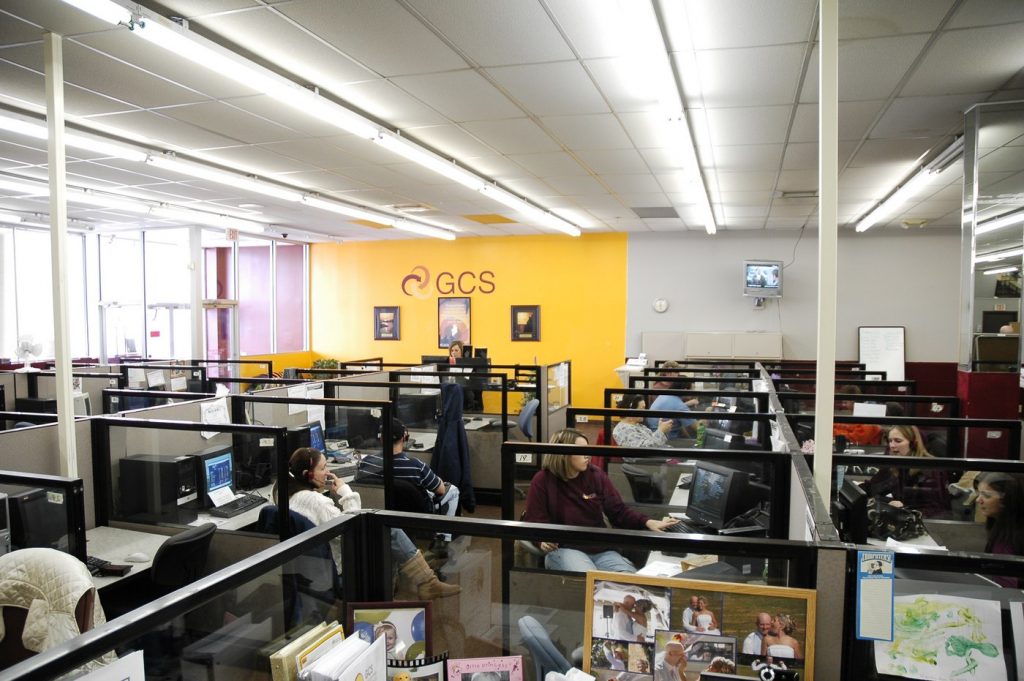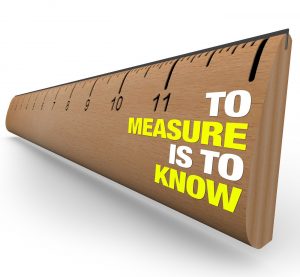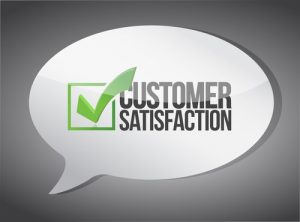The 3 Part Formula for Contact Center Success
At Global Contact Services, we believe the combination of technology, augmented with a personal, human touch, will lead to the best results for your contact center.
In order to achieve the right balance of technology and a human touch, your contact center needs to track important key performance indicators (KPIs). You must also have the knowledge and expertise to interpret the data behind the metrics so you can optimize for success.
When analyzing the KPIs and metrics of our contact centers, we divide them into three categories – efficiency, performance and quality.
Dividing metrics into these three categories ensures that you’re measuring every aspect of your center. When you measure every aspect of your center, you’re able to improve and achieve success.
The three-part formula for success in a contact center looks like this:
Efficiency + Performance + Quality = Success
Improve each element in that equation and success becomes inevitable.
Call Center Efficiency Metrics Worth Measuring
Many contact centers measure efficiency simply by looking at how quickly a call is answered. While Average Speed of Answer is certainly a metric worth tracking, that alone doesn’t tell the whole story.
Here are the efficiency KPIs your contact center needs to measure and manage for long-term success.
Average Speed of Answer
A common formula for ASA is:
Average Speed of Answer = Total Waiting Time for Answered Calls / Total Number of Answered Calls
While ASA can influence center efficiency, it doesn’t paint a complete picture. Other efficiency metrics need to be accounted for.
Abandonment Rate
When a customer drops out of a call due to long wait times, frustration over menu choices, or any other reason before they speak to a human – it’s an abandoned call.
Utilization Rate
In a call center, Utilization Rate is measured by comparing the average handle time (talk time plus any after-call work) to time the call representative is on the clock.
{{cta(’98f38b19-1371-4c85-aeb1-0d6d520286d6′)}}
For example, if a rep has 6 hours of handle time, compared to 8 hours on the clock, the Utilization Rate is 75%.
Depending on the goals of a specific call center, target Utilization Rates will vary.
The Benefits of Measuring Call Center Efficiency Metrics
When measuring efficiency metrics, we are essentially trying to optimize our labor costs. A center with a high number of agents and no calls will have an excellent Answer Speed and a very poor Utilization Rate.
The key to success when measuring efficiency in a call center is finding the right balance of these efficiency metrics. This is where the human element augments the technological measurement of the metrics.
We pride ourselves on being able to spot the trade-offs that will lead to increased call center effectiveness. If calls peak at certain times of day, you staff at the peak hours, but you also need to use creative strategies to avoid an inefficient use of your labor.
Cross-training representatives on different call types (i.e. reservations vs. customer service) and supplementing a core team of CSRs to handle spikes in traffic are just two ways to make sure you are balancing your efficiency metrics in a way that leads to a successful operation.
Call Center Performance Metrics to Measure & Manage
While efficiency metrics provide insight into how well you’re utilizing your resources, performance metrics can give insights into how effectively your center is operating.
The difference between effectiveness and efficiency can be summed up very simply:
Efficiency is about doing things right; Effectiveness is about doing the right things.
First Call Resolution
Answering a customer’s question or solving their problem on the first call leads to fewer calls coming into the call center.
Rates for First Call Resolution will vary depending on the type of center – a help desk vs. credit card activation – but with lower call volume and happier customers, your call center is operating effectively and performing well.
Second Call Avoidance (or Next Call Avoidance)
Anticipating the needs of your customers leads to a higher performing call center, as well as a superior customer service experience.
Second Call Avoidance takes First Call Resolution to the next level. Not only are your CSRs making sure they answered the question or solved the problem the customer called about, but they also seek out any additional issues they can resolve, rendering a second call unnecessary.
For instance, if you’re helping a customer set up a car service to take them to the doctor, the CSR can ask follow-up questions, like “Can I schedule your ride back home?” or “Do you have any follow-up visits you’d also like to schedule now?”
Anticipating the future needs of your clients provides them with a great experience, and decreases the pressure on your call center.
In turn, this increases the performance and effectiveness of your center.
Call Center Quality KPIs You Need to Monitor
The third element in the formula for call center success is quality. If you are measuring efficiency metrics, you’re doing the right things. If you measure performance metrics, you are doing things right.
Including this third category of metrics – quality – is the missing ingredient to success. Remember, the formula for success in a contact center looks like this:
Efficiency + Performance + Quality = Success
Improve each category and success is inevitable. Let’s take a look which quality metrics you need to measure and improve.
Customer Satisfaction
One of the largest quality measurements is customer satisfaction, also called a C-stat score. This score can be determined by following up with a manual phone call or a post-call survey to measure overall satisfaction.
The surveys can take place directly after the call, your customer can call into them once the call is completed, or someone from your call center can follow up with customers. Post-call surveys, where clients wait on the line after their agent drops off, get a higher percentage of utilization from customers. By measuring the overall satisfaction of your clients, you can make improvements where needed.
Session Monitoring
“This call may be monitored for quality purposes.”
If you’ve heard this before, there’s a chance that an agent, their manager, or both, in an effort to measure the quality, reviewed your call. Although session monitoring is sometimes thought to be subjective, it can be used to improve your call center when you establish proper protocol.
Questions like “Was a proper greeting issued?” or “Was the customer verified using proper questions?” can be used to improve quality. Additionally, pace, tone, clarity and diction come into play when monitoring sessions. For this reason, session monitoring should be used in addition to other forms of quality measurement in an effort to improve customer experience.
Error Rate
Everyone makes mistakes; and while it’s important for call center agents to be as efficient as possible, it’s also important that they do the job correctly. This is why measuring error rate can be quite useful to improve the customer experience and increase the overall quality and success of your call center.
For example, when an agent enters a credit card number incorrectly, an order may not go through, leading to a customer calling in again. Or typing in the wrong address may lead to an incorrect pick-up location. An error rate for an agent is based on the number of errors versus the number of calls. Low error rates are imperative for a high-quality call center.
Measuring KPIs for Contact Center Success
The definition of success will be different for each contact center. If you’re a help desk, First Call Resolution may be the metric you want to focus on. If you’re scheduling rides for a para-transit organization, Second Call Avoidance and Customer Satisfaction may be better metrics for you to focus on.
Regardless of which specific metrics have the most value to you, the balance of these metrics, along with the human ability to analyze the data to maximize effectiveness, will lead to success in your call center.
We only touched on eight specific metrics in this post, but there are dozens more you can manage. Which ones you choose will depend on your goals.
The important thing to remember, however, is to choose metrics in each of the three main categories – efficiency, performance, and quality.
Measuring those three elements is the only way to ensure your contact can solve the three-part formula for success:
Efficiency + Performance + Quality = Success
{{cta(’96af5a3f-dbee-46c7-bcc2-c21787c59223′)}}
{{cta(‘086bd7a8-05a0-4877-9c40-8458bb49ecd0’)}}
Request more info today
Tell us about your program and we'll get back to you ASAP.




